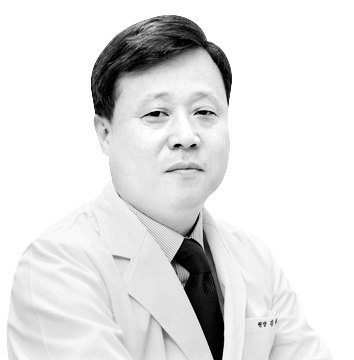Covid notes from the field

The author is the head of the Hyundae General Hospital in educational partnership with Chung-Ang University Medical Center.
The number of positive Covid-19 cases exceeds 3,000 every day. As the first phase of gradual recovery began on November 1, positive cases surged and medical professionals became extremely tired. For example, the designated Covid-19 hospital I work for has a dozen specialists in respiratory medicine, infectious disease, surgery, gastroenterology, emergency medicine and intensive care dealing with Covid-19 treatment. Recently, a doctor quit, and another went on maternity leave. But the vacuum has not been filled yet.
Small and medium-sized hospitals like the one I work for in Namyangju, Gyeonggi Province, have long had a shortage of nurses. Today, experienced nurses are especially in shortage. It is difficult to fill vacancy when there are not enough people to care for critical patients. Therefore, there is a serious accumulation of fatigue.
A few problems feel real in the field. Firstly, the management of home treatment should be improved. Some patients die while being treated at home — or are hospitalized in the intensive care unit when symptoms suddenly worsen. It is necessary to have a doctor’s consultation and basic examination before home isolation, but they are being ignored. Patients only have two or three phone consultations during the home-isolation period.
As some patients cannot explain their symptoms — such as shortness of breath — very well, conditions may worsen even without realizing it. As they cannot visit the hospital freely, their right to get treatment is restricted. Home treatment is for asymptomatic patients under the age of 70. If they can travel by car and get treated in the primary clinic and receive home treatment, the quality of the treatment and patient satisfactions would be enhanced. As a result, public health centers would be less taxed on the human resources side.
![Medical professional at a hospital in Pyeongtaek, Gyeonggi, which is designated to treat Covid-19 patients, take care of a critically ill patient on November 24, when the number of daily cases surpassed 4,000 for the first time. [NEWS1]](https://koreajoongangdaily.joins.com/data/photo/2021/11/25/65165857-783a-4061-b6ae-a319726f58dd.jpg)
Medical professional at a hospital in Pyeongtaek, Gyeonggi, which is designated to treat Covid-19 patients, take care of a critically ill patient on November 24, when the number of daily cases surpassed 4,000 for the first time. [NEWS1]
Then what should we do? It is hard to make the treatment system effective with an executive order to add hospital beds or by increasing the number hospitals. It is better to provide more support to the hospitals with capacity to increase ICU beds in order to add enough hospital beds for the critically ill patients. Also, higher-level general hospitals with relatively better staffing can be required to send two to three doctors or 3rd- and 4th-year residents to the designated base hospitals. Incentives can be given to those hospitals. A considerable number of beds can be quickly secured by converting beds for semi-critical cases to beds for critical conditions with special facilities, equipment and manpower support.
It is also necessary to consider the idea of adjusting the license schedule for nurses so that next year’s nurse graduates can be put into the medical field early. The Central Disaster Management Headquarters also must dramatically change the system of dispatching nurses. Currently, more than 1,000 nurses are on standby. As their salaries are relatively high — for instance, they can earn more than general hospital nurses can in a year by being dispatched for just three, four months — they are not willing to get a job at mid-sized hospitals designated for Covid-19 treatment. Distortion in supply and demand causes dissonance in the field.
My hospital was designated a base Covid-19 treatment hospital in December 2020 and has been actively treating the patients. But the charge for treating Covid is lower than the charge for treating general patients. Moreover, the share of the Covid patient treatment fee to be covered by local governments has not been paid yet. Each hospital has hundreds of millions of won in receivables.
For the past two years, I have been treating patients until the late hours every day. I feel rewarded yet skeptical. I hope the central headquarters and local governments listen to the desperate voices from the field and reflect them properly.
Translation by the Korea JoongAng Daily staff.










with the Korea JoongAng Daily
To write comments, please log in to one of the accounts.
Standards Board Policy (0/250자)